Resin vs. FDM 3D Printers: Comparing SLA/DLP/LCD and FDM (FFF)
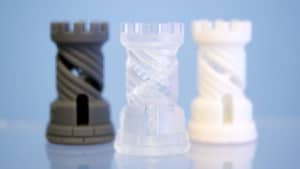 Should you buy a resin-based 3D Printer or a Fused Deposition Modeling (FDM) 3D Printer? We’ll discuss the real pros and cons of these technologies to help you find the right 3D printer for you.
Should you buy a resin-based 3D Printer or a Fused Deposition Modeling (FDM) 3D Printer? We’ll discuss the real pros and cons of these technologies to help you find the right 3D printer for you.
Some people view this as a competition. You’ve seen FDM vs SLA articles in the course of your 3D printer research. The reality is that these printers are very different technologies with varied uses. Today we’ll give you a comprehensive review of both FDM and resin-based technologies, SLA/DLP/LCD. We’ll also discuss each printer’s strengths so you can make the most informed decision.
What’s This All About
Most beginners use FDM printers due to their cost-effectiveness, but resin printers are better in many ways. Resin printers are on the rise. In this article, we will help you analyze resolution, print speed, build volume, 3D printer cost, print material costs, and ease of use. If you’re already using an FDM printer and are considering adding a second printer, read on. The section at the end of this article will give you tips on how to make the switch.
What is the Difference Between FDM, SLA, DLP and LCD 3D Printers?
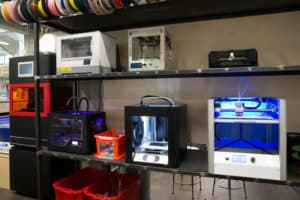 Desktop 3D Printers come in all shapes and sizes. What’s the difference between a Fused Filament Fabrication (FFF) Printer/Fused Deposition Modeling (FDM) Printer, a Stereolithography (SLA) printer, a Digital Light Processing (DLP) Printer, and a Liquid Crystal Display (LCD) 3D Printer? We’ll cover the over-simplified basics and save the more in-depth information for another article.
Desktop 3D Printers come in all shapes and sizes. What’s the difference between a Fused Filament Fabrication (FFF) Printer/Fused Deposition Modeling (FDM) Printer, a Stereolithography (SLA) printer, a Digital Light Processing (DLP) Printer, and a Liquid Crystal Display (LCD) 3D Printer? We’ll cover the over-simplified basics and save the more in-depth information for another article.
What is an FDM 3D Printer?
FDM is also known as Fused Filament Fabrication (FFF). FDM is a trademarked term, but people use it refer to 3D printers that melt and extrude filaments. The filament hardens as it cools and combines many layers together you end up with a 3D object. More on that in this article discussing FFF vs FDM.
What is a Resin 3D Printer?
Resin 3D printing techniques use photo polymerization to cure resins into forming 3D models. In simpler terms, printing with resins involves the use of a light source to harden sensitive liquid resins to create a 3D model.
The three major resin printing technologies–LCD, DLP, and SLA– can be differentiated by the light source used for curing.
Understanding the Different Resin Technologies: LCD/DLP/SLA
Are all liquid based resin 3D printers SLA? No. SLA, DLP, and LCD are resin printers, but you’ll find articles referring to all resin-based 3D printers as SLA because it was the first technology invented.
Let’s start with SLA, which was the first resin printing technology invented. SLA uses a laser beam to project UV light that cures resins and forms 3D models. SLA 3D printers use galvanometers to control the X and Y axis movement of its microscopic mirrors. The guided mirrors then aim UV rays on a vat of resins thereby forming the 3D model. Picture a laser moving along hardening the resin as it passes.
The manufacturing process for SLA 3D printers and their microscopic mirrors is expensive, which makes the purchase price comparatively high and creates a need for cheaper options.
Rather than using lasers, DLP 3D printers use a cheaper more conventional light source; micromirrors that project a whole layer at a time. As you can imagine, DLPs are much faster and cheaper than SLA. All those tiny mirrors aren’t a whole lot cheaper.
LCD is now on the rise with Anycubic Photon leading the charge. LCD can be cheaper as it uses an array of LEDs shining through an LCD to project the curing light, with no need to project or direct the light source with all those little mirrors.
The easiest way to envision the difference between DLP and LCD is to think of TVs and Projectors. A DLP is like an old school projection TV, where an LCD is ike the skinny TV hanging on your wall.
What Types of Models Do they Use?
Both FDM and resin printers take instructions from 3D CAD models, but one CAD model will not work for both types without modification.
OK, let’s get into the fun part of this article.
Material Analysis: Which 3D Printing Style Has The Best Options
The quality of the printed object is directly related to the materials used. FDM works with a number of filament types, including PLA, ABS, Nylon, TPU, and PETG. They come in glow in the dark and conducting and can be mixed with metal or wood. FDM offers more options for now. Resin filaments are also available in varieties like standard, clear, engineering grade, ceramic, and flexible. There aren’t quite as many resin choices as filament choices, but they all perform well under specific circumstances. The biggest difference is that FDM uses filament wound on a spool, while resin-based printers use liquid resin.
Conclusion:
I prefer FDM. Resins come with great options, but FDM offers more variety. Cleanup is also a factor, which we’ll discuss later.
Print Quality: Is Resin 3D Printing Really That Good?
If you’ve googled images of 3D models, you’ve probably found that there’s a wide range in the quality and resolution of the final print. FDM quality is dependent upon the machine’s calibration, movement, and hardware.
On a macro scale, there are not as many factors to consider with SLA/DLP/LCD 3D printers. The resolution for these printers is less reliant on user tinkering and instead depends on laser size or number of micro LEDs (micromirrors.) Tech companies have been perfecting these types of resolution for years.
Comparing the entry-level FDM printer, Creality Ender 3 with the entry-level LCD printer, and the Anycubic Photon, you’ll find that the resolution is better on the Anycubic. You could tweak and upgrade the Ender 3 to get results similar to Photon level results at a lower price, but even with tinkering, you won’t achieve the same results.
Conclusion:
Without a doubt, SLA/DLP/LCD 3D printers have the best resolution and are the absolute best at dealing with very small details. 3D printers can produce breathtaking results, but FDM has come a long way and is adequate for most print jobs, except items with small details like miniatures and jewelry.
Build Volume: Bigger is Better, Right?
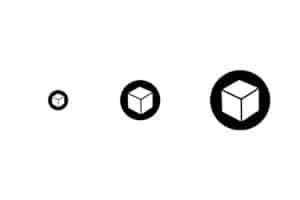 FDM will win this category. FDM can’t be beaten on build volume to price ratio. Making the build volume bigger on an FDM printer requires providing more printhead travel and a bigger bed. Accomplishing the same thing with SLA, DLP and LCD requires the addition of many more specialized bits and pieces.
FDM will win this category. FDM can’t be beaten on build volume to price ratio. Making the build volume bigger on an FDM printer requires providing more printhead travel and a bigger bed. Accomplishing the same thing with SLA, DLP and LCD requires the addition of many more specialized bits and pieces.
At any given price point, you won’t find resin printers with the same build volume as FDM. Large FDM printers like the Creality CR-10s and CreatBot DX Plus are a testament to this fact. Resin printers offer a considerable build size but can’t compare with larger FDM offerings.
Conclusion:
FDM wins hands down, which will be important later for our verdict.
Print Speed: Which Style of 3D Printer Wins the Race
It’s logical to talk about print speed after resolution, as these factors are always tied together with higher resolution prints requiring more time. FDM 3D printers can print quickly when needed, like for printing multiple generic parts without intricate details. FDM’s ability to be quick is determined by two major factors. First, it’s easy to change the nozzle on an FDM printer, allowing you to extrude more material, more quickly. Second, you can increase the speed at which the print head travels. This has a trade-off as the quick movement can spell disaster on print quality if not done correctly.
Resin printing can also be quick. SLA is the slowest of the resin technologies because DLP and LCD project a whole layer at once. The key difference for me is that resin 3D Printing doesn’t require the same quality trade-off as an FDM.
Conclusion:
There’s no clear winner. FDM is technically faster, and if this is a critical need for you, it’ll come down to the specs of the machine. Your decision between FDM and Resin will most likely rest on a different, more important category.
Ease of Use: Simplicity in Action
Ease of use is a big decision point for many users. I assume many of you are beginners, and those of you who aren’t are still curious.
FDM printers are generally easier to use for several reasons, including RepRap movement. There has been a large community working to improve FDM printers and build up a very large knowledge base. People have worked on kits for many years and have helped to work out lots of kinks. FDM is easy to understand and the community is very supportive. That’s why it’s used in educational circles more often than competitors.
Resin printers, despite being around longer, use more complicated technology and have not been tested by as many DIYers. SLA/DLP/LCD printers don’t require as much setup as FDM printers, and that will be reflected in the price category later.
The resin printing process is different from the FDM printing process and requires some practice. There are lots of learning resources online, but you may still need experience to get it right. Some believe that printing with resin is much more difficult to grasp. Many people try to translate their FDM knowledge to the resin world, but it doesn’t work. While the learning curve is steeper, resin printing is relatively easy once you’ve learned the basics.
One strike against resin 3D printers for beginners is the precision of positioning the supports. You have to get them right or you’ll have more catastrophic failures.
Conclusion:
FDM wins this category by a slim margin. FDM is easier to use because the community has been sharing information longer. This gap will likely decrease as resin begins to become more affordable and the community grows.
Adhesion/Removal – Who Likes First Layer Problems?
FDM printers are notorious for their first layer problems like making your prints stick when printing. There is a plethora of information to help you figure out how to resolve your first layer issues, like nozzle distance, ambient temperature, and print bed type. These difficulties are usually resolved by using adhesive covers on the print bed and following extrusion directions. Even when you have your settings right, these issues can crop up between prints.
Sometimes it‘s difficult to remove an FDM print after it’s completed, but it will be easier if you’ve done your prep work and your settings are correct. You may need to carefully wiggle a palette knife to remove printed objects.
The process of curing liquid resin with lights makes produces good adhesion. You’re won’t need to adjust and readjust the print bed and light source to solve adhesion issues. Resins really do stick and can require an intensive cleanup process. You’ll just need to prepare to put in some elbow grease on the back end. Newer technologies that use oxygen to create dead zones prevent excess resins from sticking to the print bed and are becoming more common.
Conclusion:
Resin 3D Printers win for tinkering. FDM takes wins for elbow grease. In my opinion, the degree of tinkering and re-adjusting required for FDM takes it to last place. Removing a print can be difficult, but messing up the first layer can destroy a print and waste your materials.
This leads to our discussion on ease of use. Though FDM is easier to grasp, it requires more intensive tinkering throughout the process.
Fumes: Safety First
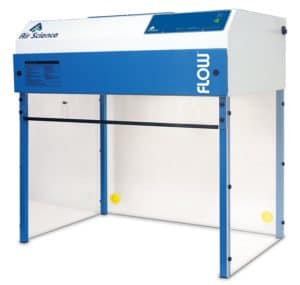 We’ve established that 3D printing produces its fair share of odors, fumes, and carcinogenic materials. There are now hundreds of eco-friendly PLA products available. There are also materials for FDM that reduce hazardous emissions. Resins produce more fumes than FDM, but any filaments for FDM are not as friendly as PLA and will require the same precautions resins do. Resin offerings have not yet evolved into eco-friendly options. This means you must take some precautions when 3D printing with resins.
We’ve established that 3D printing produces its fair share of odors, fumes, and carcinogenic materials. There are now hundreds of eco-friendly PLA products available. There are also materials for FDM that reduce hazardous emissions. Resins produce more fumes than FDM, but any filaments for FDM are not as friendly as PLA and will require the same precautions resins do. Resin offerings have not yet evolved into eco-friendly options. This means you must take some precautions when 3D printing with resins.
Regardless of any eco-friendly materials, I recommend using any 3D Printer in a well-ventilated space with air filtration.
Conclusion:
If you must print in a non-ventilated space, FDM wins thanks to PLA. Your choice of printing materials is severely limited in enclosed spaces, but in a well-ventilated space with the right safety precautions, either type of printer is fine.
Post-Processing: Hard Work vs. The Mess
Post-processing is an area in which FDM and Resins differ greatly. Both FDM and SLA/DLP/LCD require work on the back end to ensure they look the best, but what is that work like?
First, supports are necessary for both FDM and Resin printers, so it’s important to remove them. FDM machines with dual extrusion allow you to print supports with a dissolvable material, but most people don’t spend extra for that option. You’ll probably snap off your supports and sand away any excess, as you would finish a model kit. Any blemishes found after removing the supports can be removed. Because of the resolution differences and possible over/under extrusion and stringing, you may find yourself dealing with more bumps and other issues with FDM printers. It’s easy to smooth them with sandpaper.
You’ll also need to remove supports with resin. Remove resin supports before curing so they’ll be easier to work with. Though resin printing doesn’t present as many problems as other types, there are other considerations. The most important thing to consider is that resin printers are messier. To remove excess resin and cure your 3D prints, you’ll need gloves, isobropyl alcohol, and plastic sheeting to keep your space clean. Use an ultrasonic cleaner, if possible. Some resin users report that the mess at the end was discouraging at the beginning, but was much easier after they got used to it.
Conclusion:
FDM wins in post-processing work when it comes to mess and clean up. Resin’s strong point is that there is less sanding work. This makes a more standardized process, which takes less than 10 minutes of the maker’s work.
3D Printing Cost: How Much does 3D Printing Really Cost?
Affordability is key. Cost efficiency is a serious consideration in 3D printing, and there are critical differences between these 3D Printer types. The advent of desktop 3D printers has made the entire process more affordable, that doesn’t mean it’s cheap.
This analysis will discuss the cost of getting started and the cost of executing projects. To make the analysis relateable, two 3D printers–Creality Ender 3 and the AnyCubic Photon–will be pitted against one another.
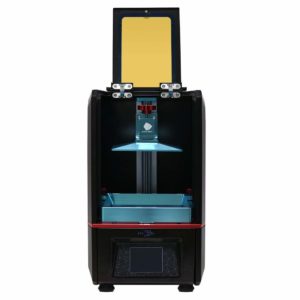
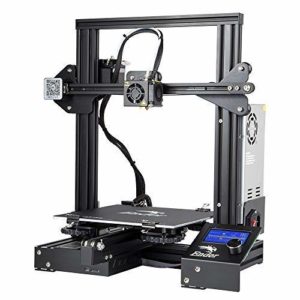
How Much Does the 3D Printer Cost?
On average, an FDM 3D printer is inexpensive compared to competing technologies. If you’re looking for entry-level options, you could spend around $200 for a good FDM printer. Our Ender 3 cost us around $240.00 on Amazon. FDMs advantage on the initial purchase is due to the fact that kit, or partially assembled printers, are available. You’ll put in more work on the front end, but these printers are more affordable.
Resin printing isn’t cheap and SLA, LCD and DLP printers rarely sell for less than $500. This elevated cost is in partially justified by the precision levels of resin printing. The Anycubic Photon is a quality option for a more reasonable price of $450. It’s more expensive than the Ender, but it comes assembled and requires much less tinkering.
How Much Does 3D Printing Cost?
FDM uses plastic filament materials sold on spools. A 1kg spool of PLA costs approximately $27.00, while enhanced filament costs $35.00 to $60.00 for 1kg. The low cost of filament makes 3D printing relatively affordable, even when accounting for mistakes. It’s difficult to compare machine prices, but filament printing is more efficient and cost effective than resin.
Resin printers use liquid resins sold in bottles of 1 liter or more, for $60.00 to $120.00 per bottle. Price fluctuations depend on the manufacturer and brand rather than on any enhancements. The resin printing process also produces excess supporting features. In short, resin 3D printing uses more material than required, and is less efficient. The cost difference is less noticeable when printing small objects, but supplies become more expensive as you scale up.
Finally, every 3D printer will experience wear and tear. On FDM printers like the Ender 3, the most susceptible parts are the extruder, tubing, and bolts, which can range from $5.00 to $35.00. In resin 3D printers, the resin tanks and print beds are susceptible to wear and range from $40 to $100 depending on the manufacturer. You’ll need to replace some of these more expensive components during the lifespan of your 3D Printer.
Conclusion:
FDM is cheaper to start, cheaper to run, and cheaper to maintain. That gap is closing on the front end, but it’s still a noticeable difference.
Summary
The models are very different by comparison. The choice is yours, but that’s not very helpful advice. Let’s lay out some use cases to help you make your decision.
First, let’s reflect on what we’ve discussed:
- Printing Materials: FDM wins over Resin because it offers more choices.
- Print Quality: SLA/DLP/LCD has better resolution than any FFF/FDM 3D Printer.
- Build Volume: FDM leads because Resin 3D printers can’t efficiently scale in the same way.
- Print Speed: FDM wins.
- Ease of Use: FDM wins on the learning curve, but resin becomes easier because of the community.
- Adhesion/Removal: Resin takes the lead because there’s less tinkering on the front end.
- Fumes: FDM is better without ventilation, but it’s a tie with ventilation.
- Post Processing: FDM creates less of a mess up front, but I might convert to resin given enough time and practice.
- Cost – FDM takes this because you can’t beat FDMs price ratios.
Looking at the results, we can see that this will to come down to use cases.
Verdict: Helping You Make the Right Decision
If your 3D printing applications rely solely on quality to be successful, resin 3D printers are best. Resins’ high precision levels make it easier to develop intricate components with smooth surface finish. FDM printing is also capable of high precision levels, but SLA/DLP/LCD is better, especially for miniatures and jewelry.
FDM is preferable If you want to be able to take advantage of a large build volume and have a large variety of projects available to you. Your options are not limited by the unique requirements of the 3D Printer as much with an FDM printer. FDMs are also more cost-efficient.
For most people, the question comes down to whether the high level of quality worth the price? If you need to print small details and are willing to accept a small price hike, you will not be disappointed with a resin-based 3D printer. If you’re looking for a lower price and don’t have specific printing needs, start with the larger community and smaller cost commitment of an FDM 3D printer.
Use Cases
We’ve created this quick reference chart to help you decide based on your printing needs.
| 3D Printing Application | Best 3D Printing Technology |
| Large Industrial Prints | FDM |
| 28mm Miniatures | LCD/DLP |
| DnD terrain | FDM |
| Intricate Detailed Prints | LCD/DLP/SLA |
| Generic Prints | FDM |
| Jewelry | LCD/DLP/SLA |
| Educational Models | FDM |
| Cosplay | FDM |
| Electronic Boards | LCD/SLA/DLP |
Is a Resin Printer a Good Second 3D printer?
This may seem like an odd question for beginners, but other users will be familiar with the decision. I recommend that new 3D printers start with FDM, like a Creality Ender 3, for its large build volume, and play around. Once you’ve become hooked like the rest of us, pick up a resin printer so you’ll be able to print in high detail too. This is a great solution for enthusiasts but can be expensive for some. It’s not necessary to have multiple 3D printers, but it is fun.
Switching from FDM to Resin: What You Need to Know
There are a few things to consider, whether you’re switching from Resin to FDM, or you’re adding a second printer.
As a bona fide FDM user, you’ll need to understand that everything about resin printing is different! Buying a 3D printer with slicing software like your FDM printer will help to ease the transition. An SLA printer laser will follow a similar laser-curing path as a nozzle. You don’t need one more thing–like learning laser printing software–to take up your time.
Speed up your learning process by joining making communities on Reddit or Facebook. These communities will give you the support you need to get over the culture shock that comes with the switch. There are a few other things to note:
- Resin Printing is Messy: The 3D printers work with liquid resins that must be cured by a light source. Prepare a comfortable, easily cleaned workspace for your 3D printing exercise.
- Expect More Support: Resin printing requires excessive supporting features to work. Stock up and be prepared to use several bottles of resin. Be sure to account for failed projects that will use extra supplies.
- Get a Solid Resin Printer: Professionals recommend purchasing a high-quality resin printer that reduces trial and errors as well as resin waste. This printer may cost more, but the return on investment with quality prints is worth the expense. (We recommend the Anycubic Photon as a well-tested machine for a good price.)
- Prepare for Post-processing: Your 3D printing kit should also include items that simplify the printing process, like isopropyl alcohol, gloves, a face mask, bottles of resin, and an ultrasonic tumbler. You may also eventually need spare parts like a resin tank.
- A Busload of Patience: The learning curve may seem difficult for new users and patience is key. Remember that practice makes perfect.
Final Thoughts
If you are new and are looking for more information check out our 3D Printing Basics articles. If you’ve been around, but are looking for some pro tips, we have some articles for you as well.
Thanks for sticking with us through this article. We’re happy to help, whatever your decision may be. Comment below to tell us which 3D printer you’re purchasing and ask any questions you have. We want to hear from you.
Finally, can we ask you a favor? If you liked this article and found it useful, share it and help us get it out in the community. Thank you.

